Restoration and Preservation Staining
Words: Jennifer Gill
Words and Photos: Jennifer Gill, Exact Match Masonry Staining LLC
Why Restore Historic Masonry?
Beautiful, sustainable, enduring masonry and historic restoration go hand in hand. What could compare with beautiful masonry structures that have endured the test of time? Each brick, stone, or concrete structure carries historical significance, representing an important piece of history that many people around the world, now and in generations past, have appreciated, often with joy and amazement. Environmental factors, limitations in building design, reflected by the available processes and materials commonly used in that era, weathering, aging and more can cause deterioration of these structures over time. Masonry preservation is an art, a science, and a worthwhile investment in preserving these structures for future generations to enjoy and be inspired by.
What is Masonry Restoration?
New masonry construction buildings require the skilled labor of trained craftsmen, masons, who follow a building plan set to the requirements of current building codes. Restoration masons can be considered specialized mason contractors, trained to understand new building construction along with deploying a related set of skills and knowledge which they bring to bear for restoring historic masonry buildings, often using the knowledge and resources which we enjoy today while keeping the historic integrity of the building or structure. A restoration mason may review historic structures and assess the extent of damage, remove damaged masonry, review the scope for additional steps or requirements which are newly discovered by the removal, and if applicable, make any updates to improve the structure as they restore it. Restoration masons know that each part of the building affects another, including other trades involved with the project. Every day can bring the turn of a new page in the book for what will be discovered as these highly skilled masons find and overcome new challenges during the project execution. With each project, we all learn more about the valuable past while preserving it.
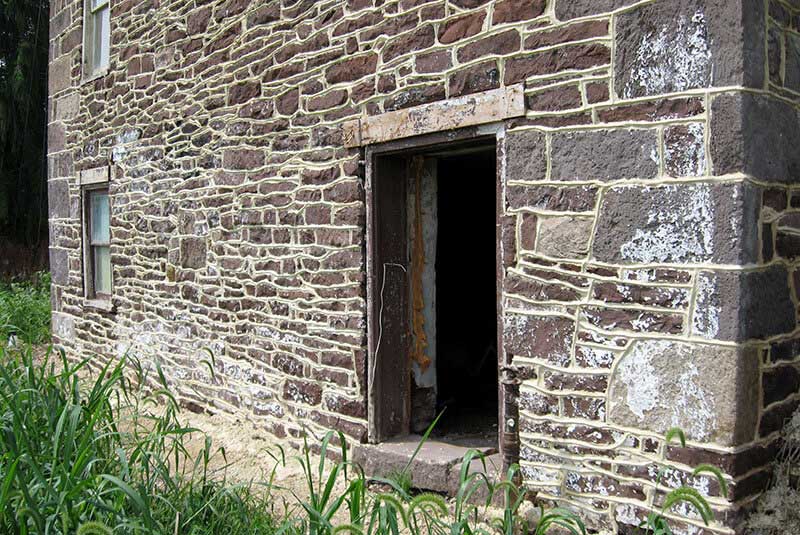 1800s Historic Natural Stone Before
1800s Historic Natural Stone Before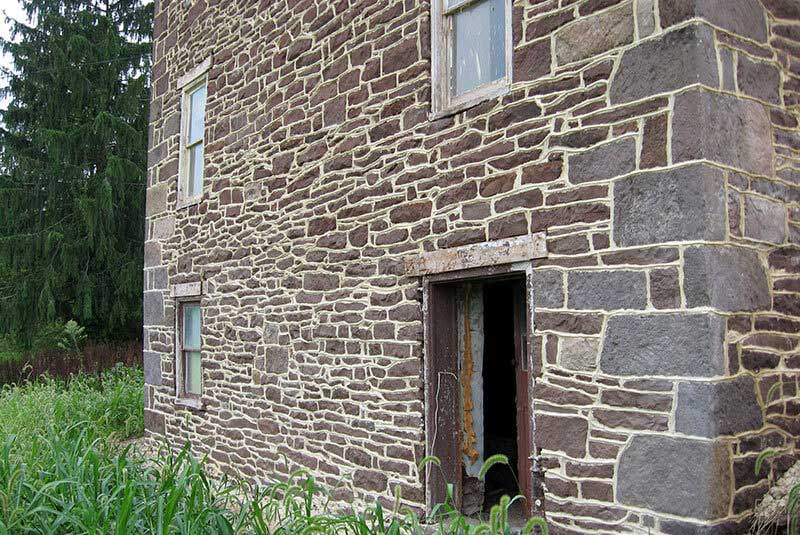 1800s Historic Natural Stone After
1800s Historic Natural Stone After
Restoration masons will also prepare surfaces, replace or repair damaged masonry elements, secure the building envelope with care, and gently clean the finished project. In many cases, gentle, sensible cleaning still may not be enough to restore the appearance of a historic structure to its former glory. Washing, media blasting or other processes may even be deployed; however, over-cleaning these delicate structures can be disastrous, causing damage, which should be avoided at all costs. Restoration masons clean as carefully as they can, accepting that unsightly stains or discoloration could likely remain after cleaning, and they know when to call their chosen trusted masonry staining professional to transform any discoloration left to match the desired appearance in a safe, non-invasive and as a permanent way. Your chosen masonry staining expert should be able to adapt their processes, products, and completely customize colors right on the field and use their extensive experience and skill set to either age newly installed masonry or renew the appearance of severely aged masonry undetectably when the job is complete.
Masonry Staining and Restoration Cleaning To Step Back In Time
Seeing The Building As It Looked The Day It Was Completed
Some historic sites, in particular, may benefit from professional masonry staining so that the masonry is being restored to have visitors feel as if they are going back in time to see the building as it looked in the time frame in which it was built. Centuries of soil or aging would, therefore, not be period appropriate. Masonry staining professionals can take the building visually “back in time.”
Masonry Staining for Patches, Repairs, Replacement of Masonry and Repointing
Preserving Masonry Heritage By Visually Weathering or Aging New Masonry
Professional masonry staining will often be required where new masonry has been introduced, where masonry patches, repointed or patched mortar were part of the restoration plan. Whether new elements should be made an exact match with a “heritage” aging effect or whether severely aged and color-damaged areas which are localized and excessive for the look of the building are to be restored, professional masonry staining is an extremely important part of the final processes to complete the repair correctly. Sourcing more of the identical, original masonry for repair work is, at best, a challenge and, at worst, impossible. Even mortar color from past eras can be nearly impossible to match; however, professional masonry staining will remove all of the challenges of getting the color to match in every case. Masonry staining firms should be able to stain masonry lighter or darker and add color details through special processes.
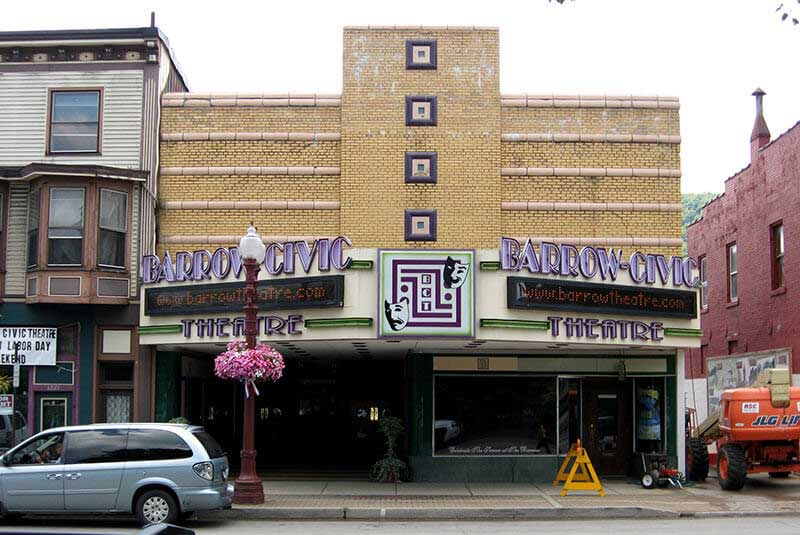 Art Deco Historic Theater Before
Art Deco Historic Theater Before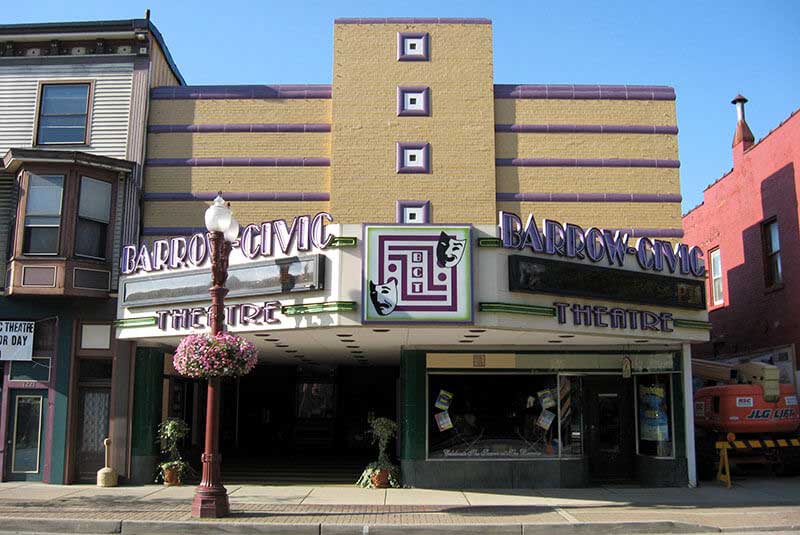 Art Deco Historic Theater After
Art Deco Historic Theater After
How To Choose A Professional Staining Firm
Choosing the right professional staining company with the highest skill set possible for historic projects and making sure that they are using fully weather-tested, fully customizable stains designed for an exact match restoration of color is mission critical to the success of these important projects. It’s ideal to prepare clients to budget properly to get the right firm involved that will solve the issue with 100% success the first time and who will be a pleasure for your company to work with on the job site and will honor your scheduling requirements. This may mean finding a Pro Staining firm that works well with your mindset and goals as a mason contractor and building a relationship with them even when you’ve not yet needed their services. Be prepared to send photos and measurements, and any requested details, and do reach out to your trusted expert as soon as you are aware that a restoration project may involve a color issue for the next steps.
Professional staining firms have a very narrow and deeply extensive skill set that is not easily subcontracted to other specialties. It’s best to find a firm that specializes in this type of work exclusively. Be careful to check that the firm that is hired for their expertise will be the firm that will perform the work. Any firm which you’re considering should have an excellent safety record and team members who maintain clearances to access all of the important or high-security sites that your firm performs work at. This may include government sites or even privately owned sites where distinguished individuals on the site require additional security or privacy protocols. Certainly, the firm should have appropriate insurance coverage for all individuals who visit the job site, maintain a minimum of OSHA 30 certification for their staff, and be experienced in utilizing the many forms of access that are required for safely working on historic masonry structures.
Professional staining firms will be able to stain just the areas affected, with rare exceptions, and in all cases, allowing for all typical color variations that would be found on historic buildings to either remain or be re-created by the staining process. When done by the right firm, no visible color differences will remain between the restored areas and existing where no repairs were necessary, or no discoloration existed when staining is done correctly.
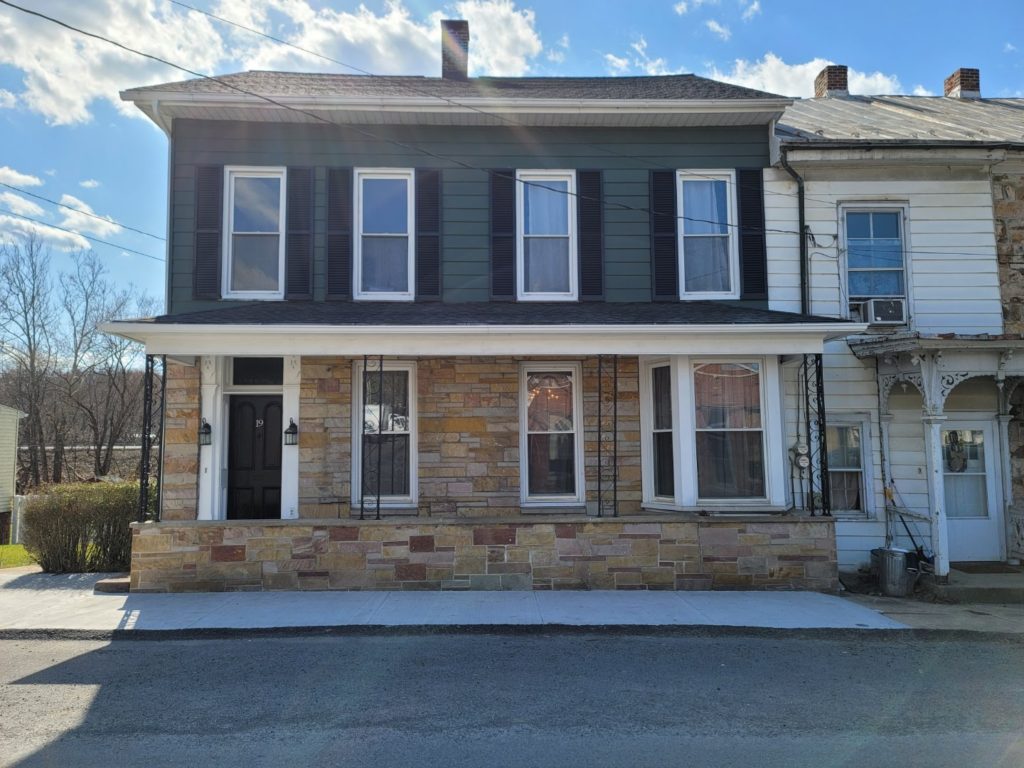 Historic District Residence Before
Historic District Residence Before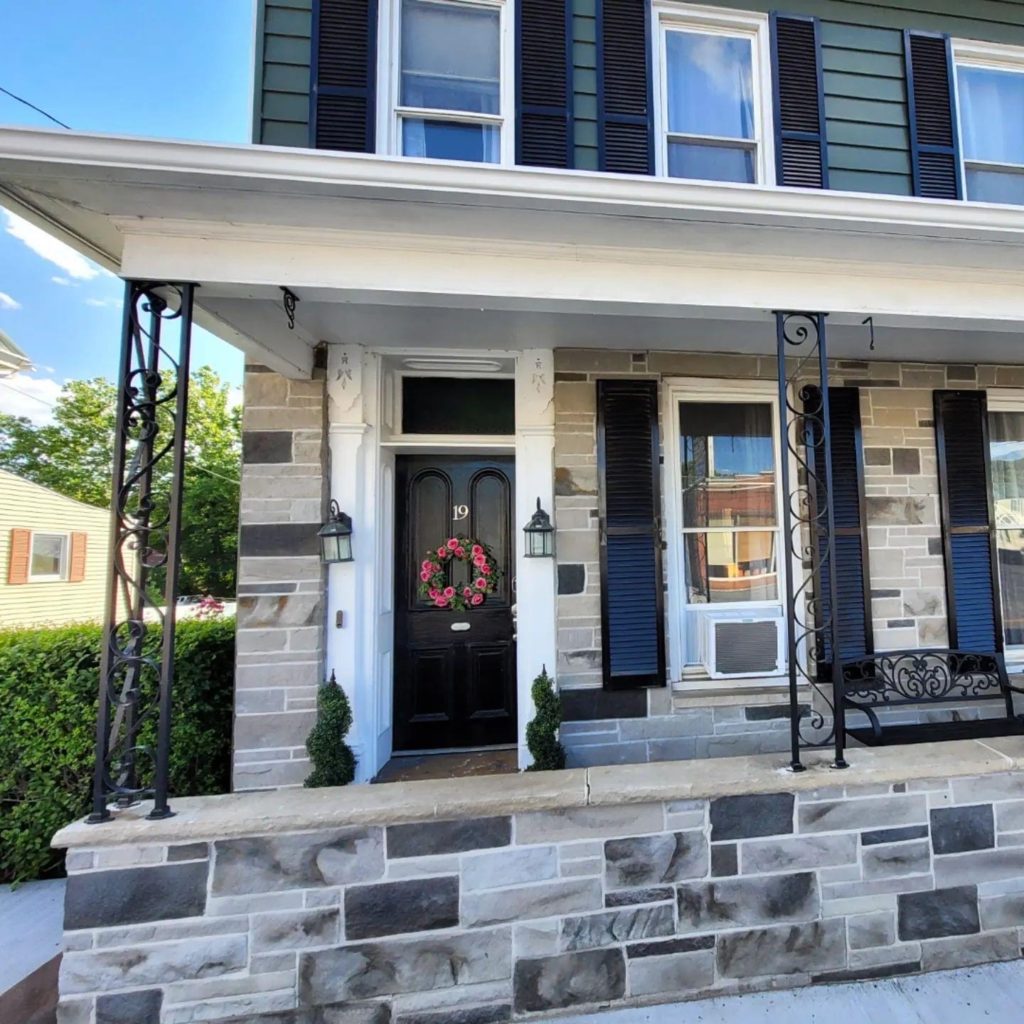 Historic District Residence After
Historic District Residence After
Professional Staining For Replaced or Patched Masonry
Simplifying and Expediting The Search for Materials
Your chosen Masonry Staining firm will be able and willing to take the time to review potential samples and advise you accordingly if you require guidance to narrow down your selection. It’s important to remember that masonry staining experts can take complete control of masonry color; however, masonry size and texture should be carefully selected to match as closely as possible to create the best outcome. This means that patches should be applied with less care about the color outcome and more emphasis placed on how the texture of the patch blends with the surrounding masonry. When choosing brick, choose the closest brick in size and texture possible to the area which is being filled in or repaired. There is no need to use energy and man hours locating colors that are “close” to the original, especially if this requires you to choose a size or texture that is dissimilar to the surrounding masonry. Remember, your professional staining expert will control the color, whether the area needs to be stained lighter or darker. Choose uniform colored brick to install, ideally lighter in color, if available, and avoid using multiple colors that are “close” but not a match, as your expert will be recreating all of the necessary colors, regardless of what you install. Block selection should be approached in the same way. Choose one readily available, uniform color as a “canvas” for your expert’s work in the correct size and closest texture possible. Some masonry staining firms can even stain to recreate block aggregate, and some are even able to stain the base mix color of some types of block and manage to not cover the revealed aggregates. Stone texture and size should also be considered just as carefully. The right staining firm can match even multiple colors of natural stone to other multiple colors of surrounding natural stone, recreating nuances and variations expected. Again, they cannot control size or texture... Cast Stone manufacturers may also be needed to manufacture carefully engineered replacement pieces, knowing that staining processes will control the color expertly, even if their mix can’t match exactly to historic pieces. Mortar joints should be carefully struck in the same way as the original building was built, and your staining expert will be able to match the color to existing surrounding mortar after a full 28-day cure process, with some exceptions to that time frame for smaller, patched areas. Ideally, a full cure will take place; mortar color will not change after the initial 28 days have passed, so don’t hesitate to call your staining expert if the mortar does not match, whether too light or too dark, if it becomes an issue with the owner. Do not seal the masonry in advance of reaching out to your masonry staining firm, as the best professional systems will have a measure of absorption into the face of the masonry to create the most natural-looking results. Placing a clear coating over masonry that is the incorrect color does not solve the color problem; it compounds the issue and complicates and sometimes prevents professional firms from accessing the pores of the masonry to perform their work successfully.
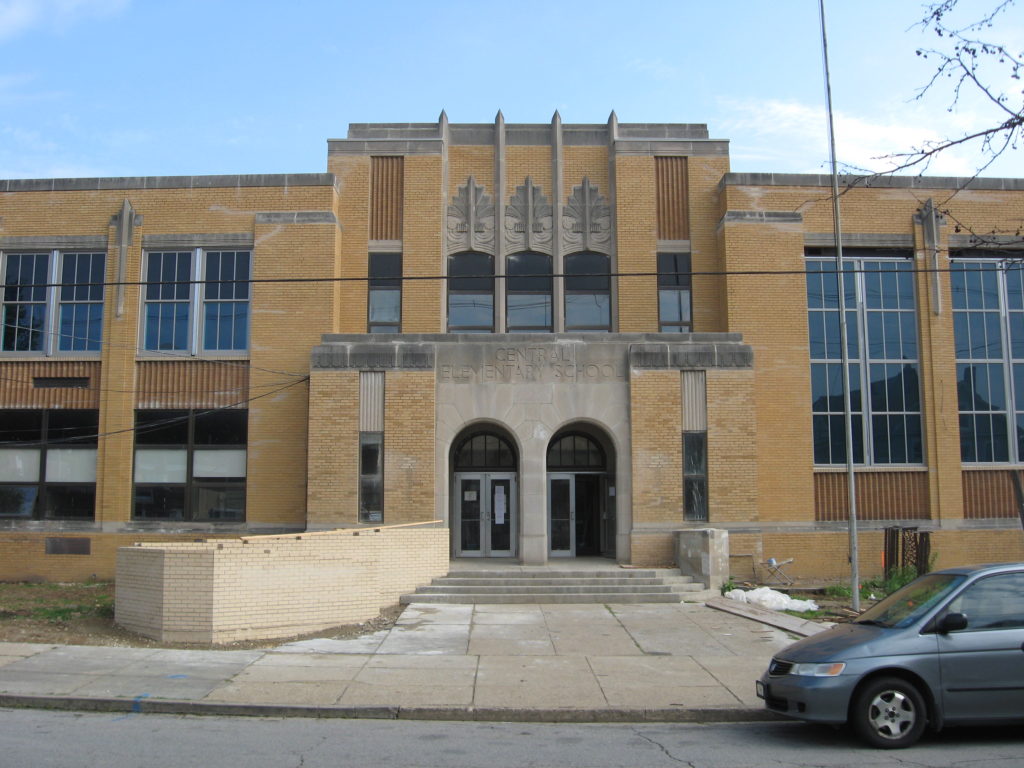 School Modernization Before
School Modernization Before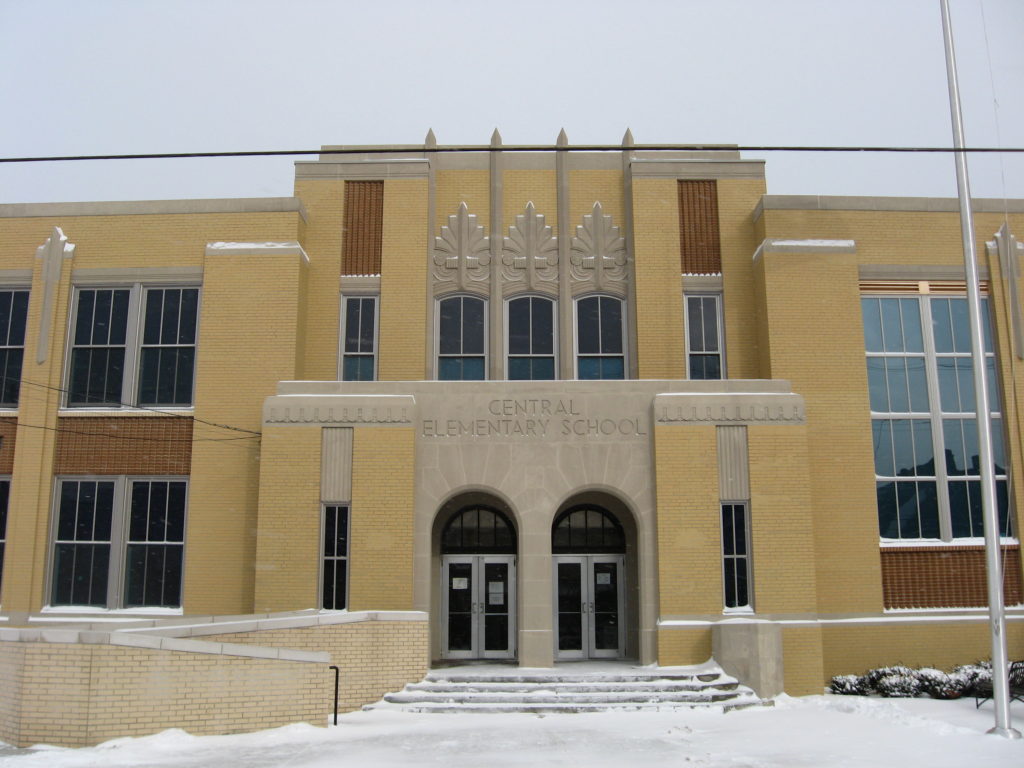 School Modernization After
School Modernization After
Adaptive Reuse
When old buildings are repurposed for present-day use, everyone wins. A piece of history is preserved while modern-day needs for buildings are met. Professional masonry staining is effective for these cases as well. Whether modernizing or making an addition to a historic school building for students to use today rather than tearing down the building and making a new build or adapting an old Coca-Cola bottling plant to be used as a high-end Self-Storage facility, when Architects are working to blend history with modern use, Professional Masonry Staining is the perfect solution. This is especially true when various stages of remodeling and restoration leave the building in less than ideal condition. Masonry staining helped “visually reclaim” excess mortar slopped onto historic brick, helped to disguise different sized or “toothed in” areas of brick, and heritage washed new Cast Stone pieces, which were replaced in the process. Masonry Staining uses modern yet time-tested formulas and processes to accomplish the goal we all should hold dear: to preserve the past for future generations as they enjoy beautiful, sustainable masonry structures.